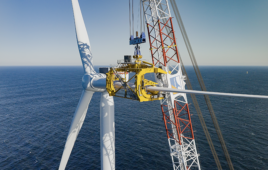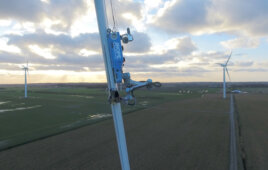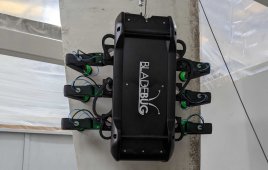
A prototype of the Lidar application in wind turbines will be available in 2012. LM Glasfiber expects to supply customers with LIDAR-enabled intelligent blades by 2014.
The question is one to be answered by an independent manufacturer of wind turbine blades as it enters a three-year research project supported by the Danish National Advanced Technology Foundation to develop laser-based wind sensory systems as an integrated part of future wind turbines. The project, a joint venture with Risø DTU, NKT Photonics, and the blade manufacturer LM Glasfiber, aims to improve the load control of the wind turbine in operation thus enhancing the efficiency of the turbine and improving its overall reliability.
“We are working on several projects to improve the efficiency of the blades and consequently the overall energy production from the wind turbine,” says LM Glasfiber Research Director Lars Fuglsang. “An important part of this is developing ‘intelligent’ blades that measure the wind and adapt to the wind conditions, or supply data to the wind-turbine controls.”
Integrating so-called Lidars (forward looking, laser-based wind direction sensors) into the blade will be an extension of previous blade monitoring technology and the potential for improved wind-turbine yield. It is expected that energy production may increase up to 5% over the wind turbine’s 20-year life.
“Current blade-monitoring technologies can measure loads on blades, but integrating Lidars into the blade lets us measure exact wind conditions to which the blades are exposed. This means that instead of looking in a sort of rearview mirror and realizing what the blade has been exposed to, we will be able to measure the wind real-time and either have the blade or the wind turbine react on this information right away.”
Filed Under: Blades





Having load sensors on the blades can provide a signal to adjust the blades at different wind conditions. With the load sensors, blades can adjust by themselves.